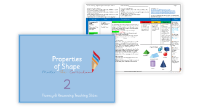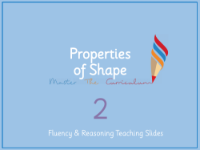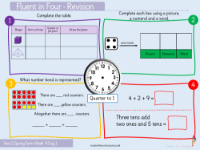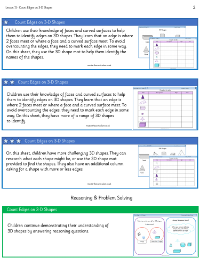Properties of shape - Count edges on 3D shapes - Planning
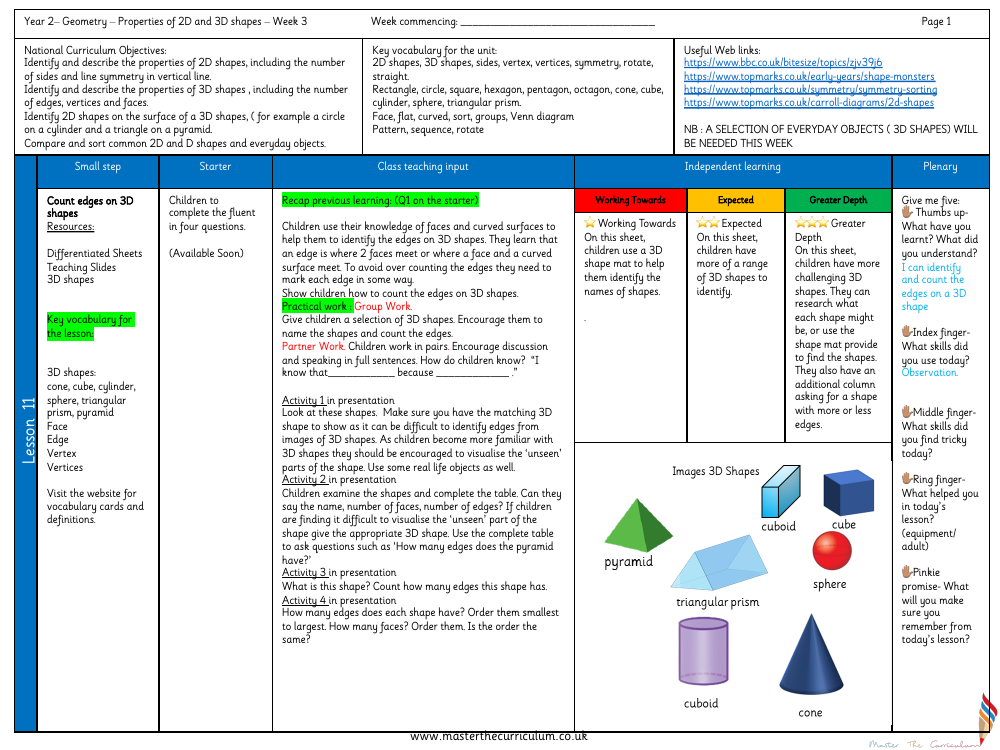
Maths Resource Description
In the third week of the Year 2 geometry curriculum, students are introduced to the properties of 3D shapes, specifically focusing on counting the edges. The lesson is part of a broader unit that aims to help children identify and describe the properties of both 2D and 3D shapes, such as the number of sides, vertices, and faces, as well as recognising line symmetry and 2D shapes on the surfaces of 3D shapes. The lesson utilises a variety of resources, including differentiated sheets, teaching slides, and a selection of 3D shapes. Key vocabulary terms for this lesson include 3D shape names like cone, cube, cylinder, sphere, triangular prism, and pyramid, along with the concepts of face, edge, vertex, and vertices. Students are encouraged to visit a website for vocabulary cards and definitions to further their understanding.
The class starts with a recap of previous learning, where students apply their knowledge of faces and curved surfaces to identify edges on 3D shapes. They learn that an edge is where two faces meet or where a face meets a curved surface. Practical group work involves handling a selection of 3D shapes, naming them, and counting their edges, while partner work encourages discussion and full-sentence explanations. The presentation includes activities where children examine shapes, complete tables, and compare the number of edges and faces. Problem-solving exercises challenge students to place shapes correctly based on their number of edges and consider other properties, such as whether a shape can roll or stack. The lesson concludes with a 'Give me five' reflection activity, prompting students to consider what they've learnt, the skills they've used, and what they found tricky, as well as what helped them during the lesson and what they will remember moving forward. Differentiated learning sheets cater to students working towards expected levels and those ready for greater depth, with more challenging shapes and additional tasks.
